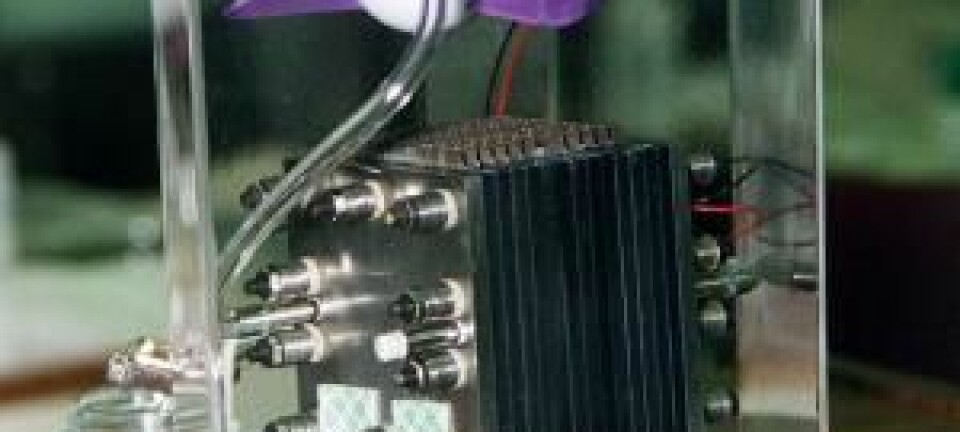
Cheaper, more efficient biofuel production from trees
Filling your gas tank with biofuels made from soybeans or corn is controversial. But researchers at the Norwegian University of Life Sciences have developed an approach that could result in a cheaper, more effective way to fuel your car.
Politicians across the globe are pushing for drivers to use more biofuels in their automobiles as a way to cut carbon emissions. But making diesel or gasoline out of what could potentially be human food is very controversial. Biofuels also raise the concern that using agricultural land to produce these fuels removes that land from food production.
But what if there was a cheap and efficient way to make biofuel from trees and the by-products from forestry? In an article published this week in the journal Nature Chemical Biology, a research group at the Norwegian University of Life Sciences (NMBU) describes a key process in an enzyme discovered at the university in 2010. This process could lead to a new and cheaper way of making biofuel from trees.
A new kind of enzyme
Trees contain a lot of sugar (glucose).
This sugar can be transformed into a variety of products, ranging from bioethanol (fuel) to a range of other substances that are currently made from petroleum.
The problem is that this sugar is bound up in cellulose — a substance that is very difficult to break down. This has made the production of sugar from cellulose an expensive affair.
In 2010, researchers at NMBU discovered a new method of breaking down the cellulose in trees and plants. At the time, the method was hailed as a breakthrough in part because it was much faster than previous methods.
The discovery was based on a brand new class of enzymes called LPMOs.
Today, LPMOs are widely used in modern bioethanol production. The enzymes make the breakdown of cellulose from wood and other plant residues much more effective. This creates what is called second-generation bioethanol.
Nevertheless, commercial companies that want to use the method face major challenges. The problem is that LPMOs can be unstable and difficult to control in a large-scale industrial context.
In addition, the process depends on the use of expensive oxygen.
Oxygen-free method
The new method that NMBU researchers discovered does not need oxygen to work. Instead, it can use cheap and readily available hydrogen peroxide.
By controlling the supply of hydrogen peroxide, it has also become much easier to stabilize and control the entire process. The researchers believe that this will allow the conversion of cellulose to sugar on a much larger scale than before.
Part of the surprise in the researchers’ findings is that they go against the conventional understanding among biochemists regarding how LPMOs break down cellulose.
According to a press release from NMBU, scientists have in fact discovered a whole new type of chemistry in the breakdown of cellulose.
They believe this approach can be used in biofuel production, and have already started discussing collaborative projects with industrial partners.
French research director
Behind the discovery of the new biofuel method are Bastien Bissaro, a French guest researcher at NMBU, and a research group at the university led by Professor Vincent Eijsink.
The new article "Oxidative cleavage of polysaccharides by monocopper enzymes depends on H2O2" and the research behind it will help answer many unsolved questions related to LPMOs. These are questions that NMBU researchers have been working on since they discovered LPMOs in 2010.
LPMOs abound in nature, and are known to play a role in many more processes than just the breakdown of cellulose. For example, both LPMOs and hydrogen peroxide are known to affect bacterial infections.
-------------------------------------
Read the Norwegian version of this article at forskning.no
































